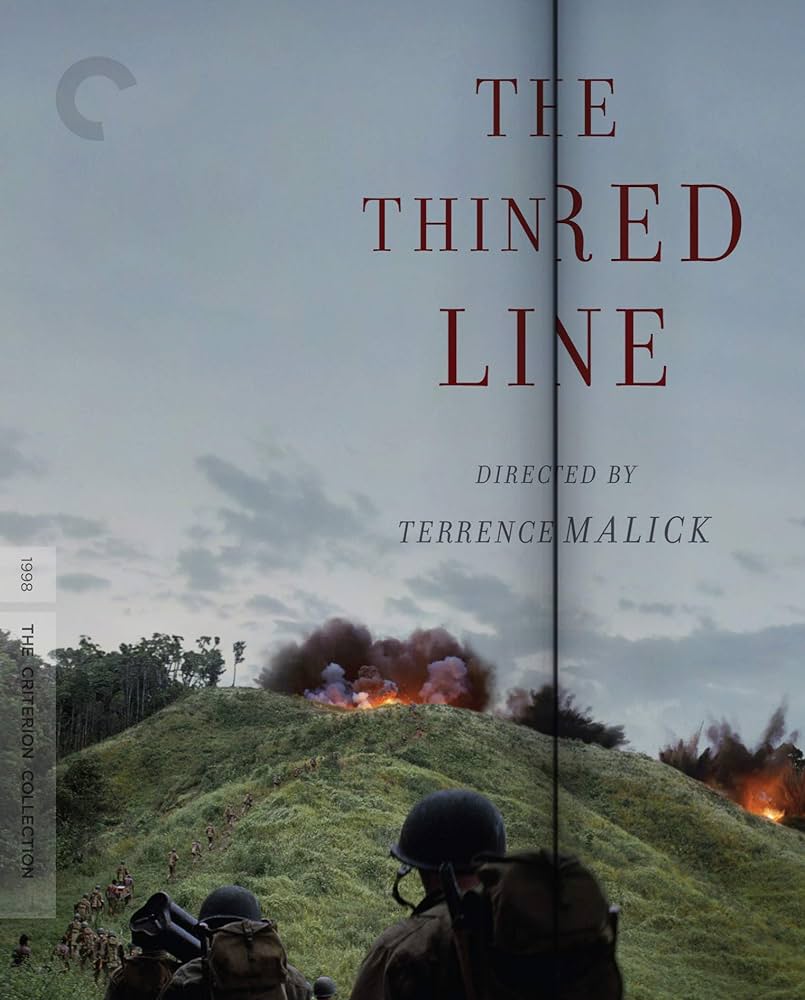The Thin Red Line is a 1998 war film directed by Terrence Malick, based on the novel of the same name by James Jones. The film follows C Company, 1st Battalion, 27th Infantry Regiment during the Battle of Guadalcanal in World War II. What distinguishes The Thin Red Line is its poetic approach to war and humanity. The film delves into the internal struggles of soldiers, juxtaposing the brutality of warfare with the beauty of nature. Themes of guilt, redemption, and the blurred line between good and evil are explored, offering a unique and profound exploration of the impact of war on the human soul.
The Thin Red Line is a 1998 war film directed by Terrence Malick, based on the novel of the same name by James Jones. The film tells the story of C Company, 1st Battalion, 27th Infantry Regiment during the Battle of Guadalcanal in World War II. What sets The Thin Red Line apart from other war films is its poetic exploration of war and humanity.
### A Unique Perspective
The Thin Red Line takes a unique approach to the War genre by focusing on the internal struggles and philosophical questions faced by soldiers during wartime. The film delves into the psyches of the soldiers, exploring their fears, hopes, and regrets. Through voiceovers and introspective moments, the audience gets a glimpse into the inner turmoil of the characters as they grapple with the harsh realities of war.
### The Beauty of Nature
One of the most striking aspects of The Thin Red Line is its juxtaposition of the brutality of war with the beauty of nature. Terrence Malick’s stunning visuals capture the lush landscapes of Guadalcanal, showcasing the contrast between the chaos of battle and the tranquility of the natural world. This contrast serves to highlight the senselessness of war and the fragility of life.
### Themes of Guilt and Redemption
The Thin Red Line explores themes of guilt and redemption through the character of Private Witt, played by Jim Caviezel. Witt is a soldier who questions the purpose of war and struggles with the morality of killing. His internal conflict serves as a poignant commentary on the toll that war takes on the human soul.
### The Thin Line Between Good and Evil
Another central theme of The Thin Red Line is the blurred line between good and evil. The film challenges the simplistic notions of heroism and villainy, portraying both American and Japanese soldiers as complex individuals with their own fears and motivations. This moral ambiguity adds depth to the narrative, forcing the audience to confront the gray areas of war and humanity.
### A Meditative Approach to Violence
Unlike traditional war films that glorify violence, The Thin Red Line takes a more meditative approach to depicting combat. The battle scenes are haunting and visceral, emphasizing the chaos and confusion of warfare. Through slow motion sequences and intense close-ups, the film conveys the horror and brutality of war without romanticizing it.
### Conclusion
In conclusion, The Thin Red Line is a thought-provoking and visually stunning exploration of war and humanity. Through its poetic storytelling and philosophical themes, the film challenges the audience to confront the complexities of warfare and the impact it has on the human spirit. Terrence Malick’s masterful direction and the stellar performances from the ensemble cast make The Thin Red Line a timeless masterpiece that continues to resonate with audiences to this day.
